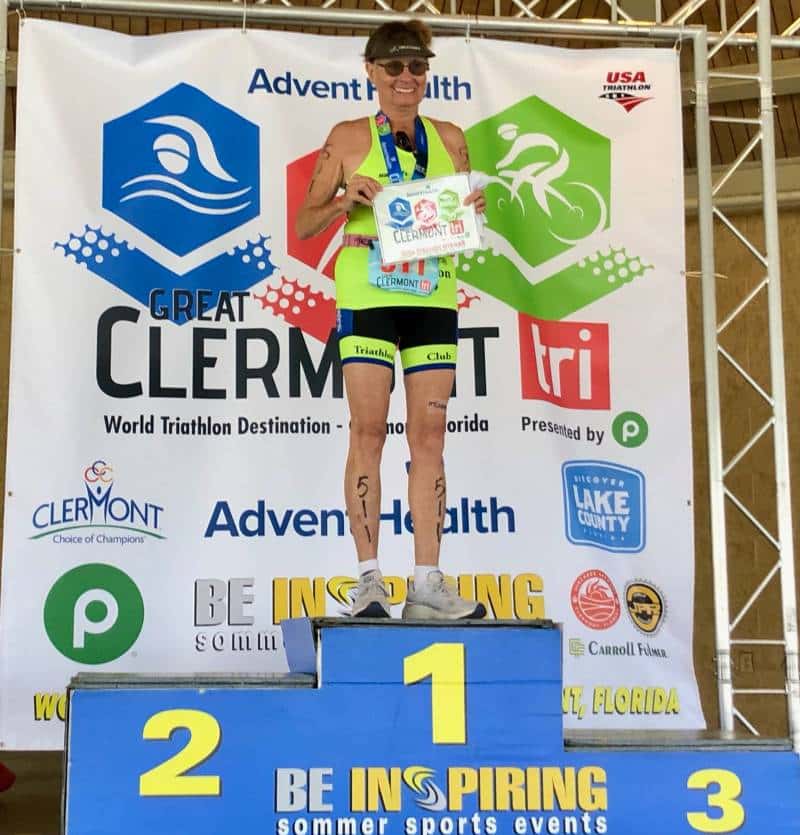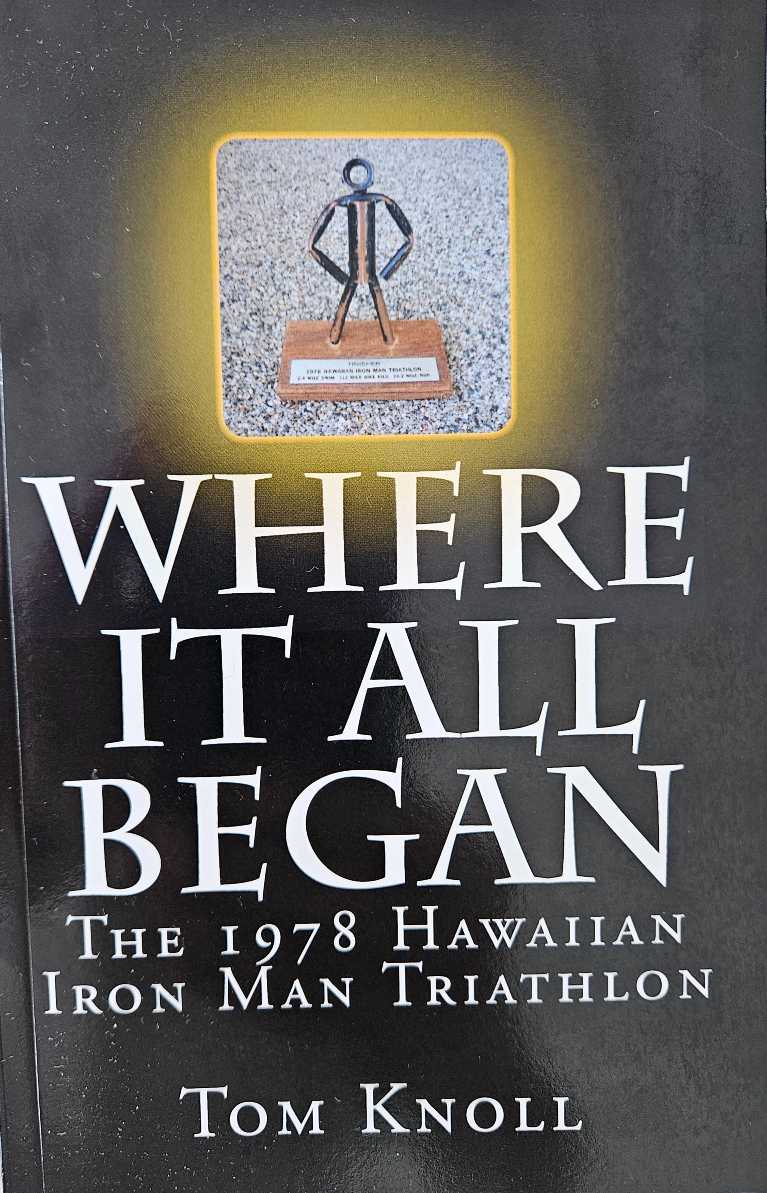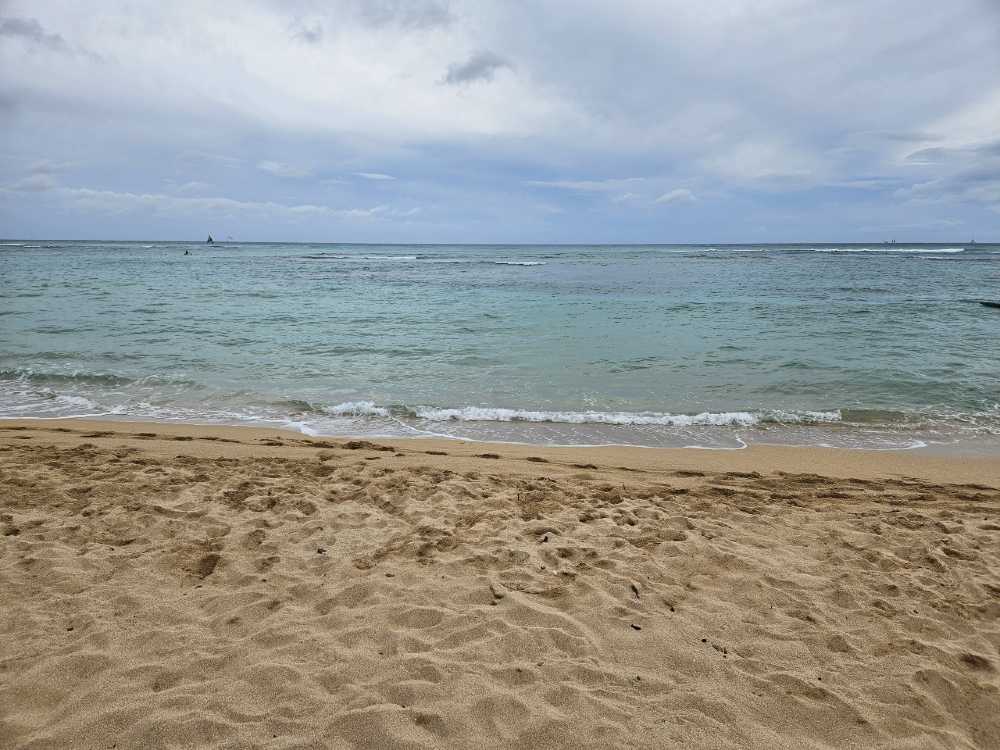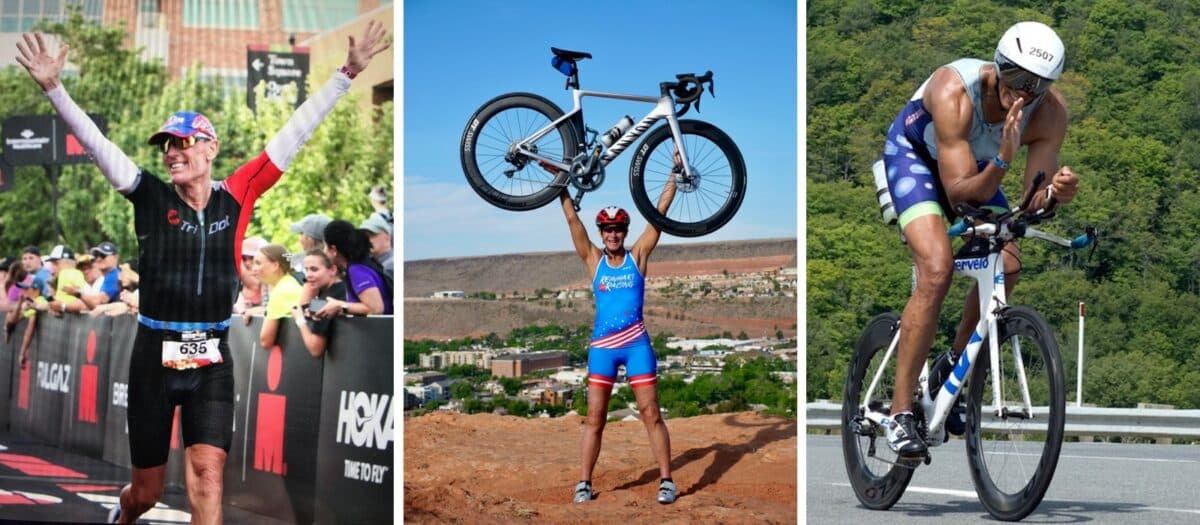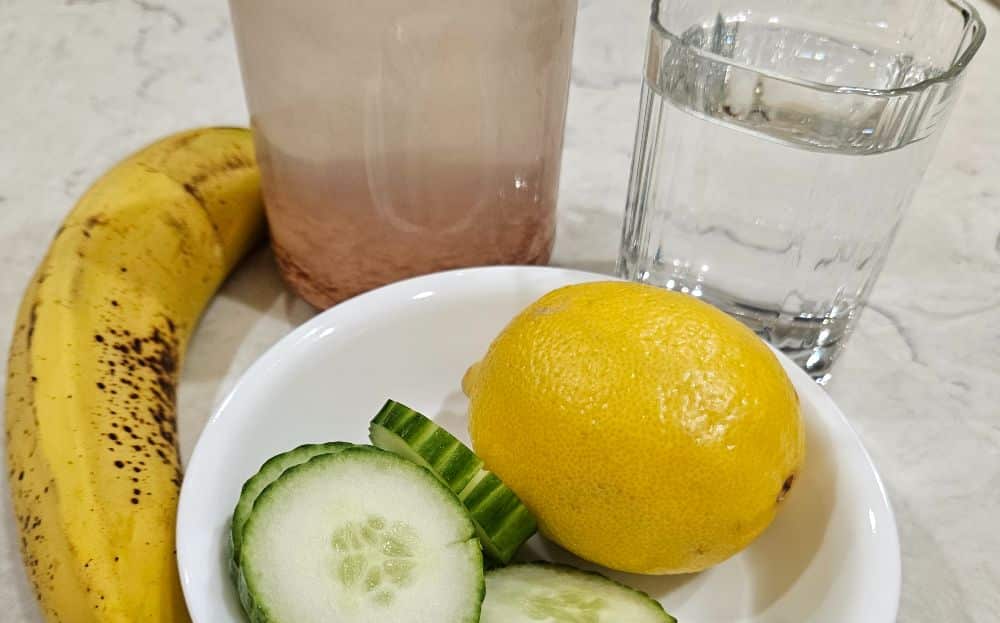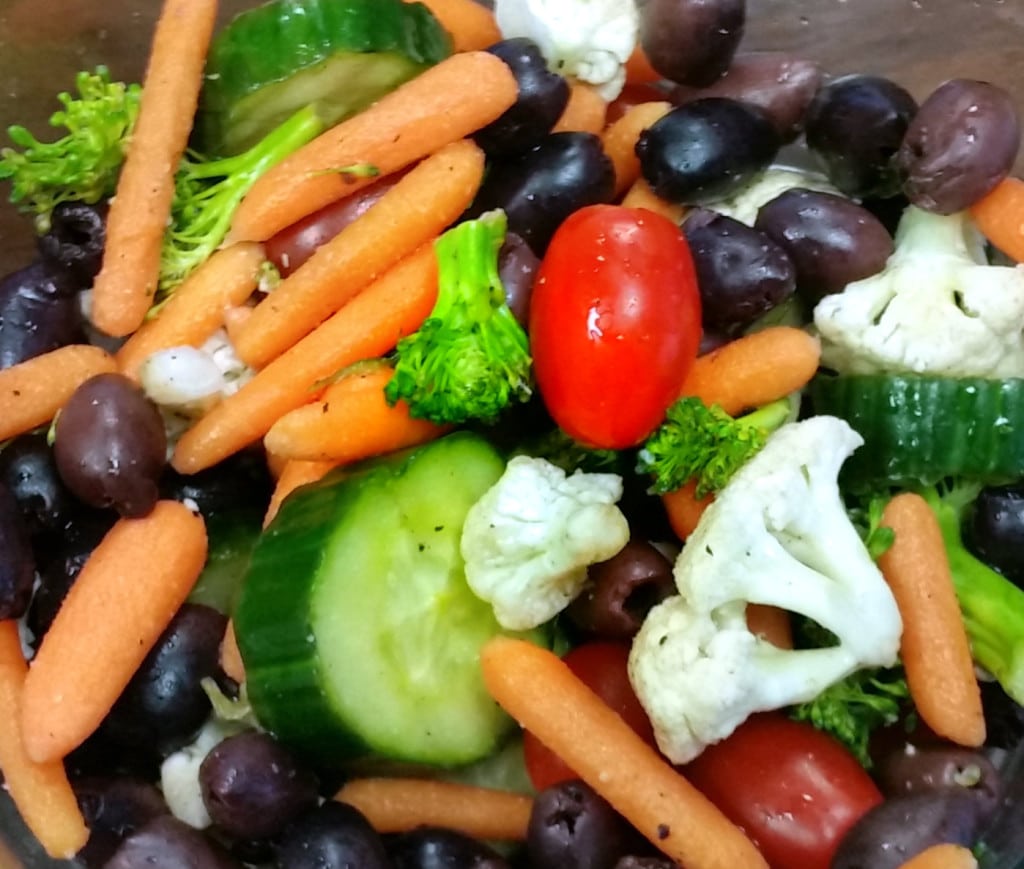Ten Years Later – Pat Johnson’s Triathlon Sequel
Pat Johnson completed her 28th triathlon at age 80. What has caused her to continue in the sport? What has she learned about triathlon over the past decade?
A Sequel Story
Ten years ago, Pat Johnson completed her first triathlon as part of a promise to her niece, Barb. The Senior Triathletes post titled “At Age 70, I Had 19 Days To My First Triathlon”—Pat Johnson’s Story describes her experience in preparing for that triathlon. Now, days after her 80th birthday, Pat completed her 28th sprint triathlon, this time with Barb.
First Triathlon of Her Eighties
The day began early, at 4 am, when Pat picked up Barb. Barb traveled from Colorado especially for Pat’s birthday and to do the Great Clermont Tri sprint triathlon with Pat.
Pat and Barb arrived at Waterfront Park in Clermont, Florida, also known as the “World’s Triathlon Destination”, at around 5 am, while still pitch dark. Through her ten-year triathlon career, Pat has learned to arrive at the race venue early, especially since she likes to get a parking space for her car close to the transition area.
As the sun rose, Pat could see that the 60 degrees morning air appeared angry, whipping up waves over Lake Minneola. During the triathlon swim, these waves made the swim more difficult than usual. Pat told me, “I have never done a triathlon swim with so big waves in which you are drinking water while swimming.”
Once the swim was over, things looked up. Barb rode with Pat during the entire bike leg, using a bike borrowed from one of Pat’s friend in The Villages. The two of them made one stop along the course, long enough for Barb to help a lady whose chain had come off.
After returning to the transition area, Pat and Barb racked their bikes, then took off on the run leg. Throughout her triathlon career, Pat, a competitive race walker, has walked instead of run. As with the bike leg, Pat and Barb completed this leg together, with a fast walk.
As the two approached the finish line, Pat saw her two nephews, who came from Minnesota to celebrate their aunt’s birthday. While the two had originally planned to surprise Aunt Pat, one of them had accidentally “let the cat out of the bag” during an earlier conversation.
After the awards ceremony, during which Pat received a first place age group award, the family headed off for a lunch at a Mexican restaurant. During lunch, the restaurant staff got wind of this meal being a birthday celebration. As they came up behind her singing and carrying a piece of flaming cheesecake, Pat nearly jumped out of her skin.
Pat’s birthday weekend with family was “delightful and a fantastic 80th birthday present.”
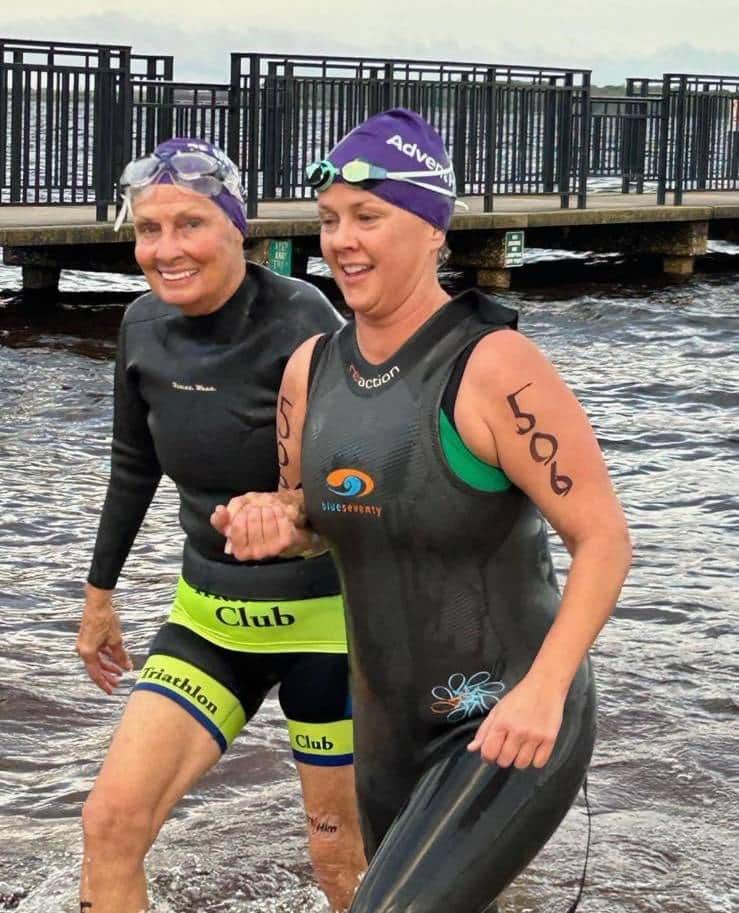
Why Continue With Triathlon?
What has prompted Pat to continue competing in triathlon throughout the past ten years?
Stay in shape
While Pat has won at least five first place age group awards, she claims to not be competitive. For Pat, triathlon is a hobby. Her real motivation for continuing to complete two to three triathlons each year over the past decade is to remain healthy and mobile.
Along that line, Pat tries to do some physical exercise every day. Some days, this is swimming. Other days, she goes for a long walk, bikes, or joins an exercise class with The Villages Triathlon Club.
“If I wouldn’t keep walking, biking or swimming each day, I wouldn’t be as healthy and mobile as I am.”
Pat holds herself to this by keeping a daily log of physical activity, writing down each activity and its distance. Having a triathlon on the calendar also helps her be consistent and intentional in training.
Inspire others to stay active
Pat completed her first sprint triathlon mainly because of Barb’s goal to complete an Ironman triathlon before age 40. Years later, Pat met a couple, both in their 90s, who did triathlons together. She has also seen families with young children at triathlon events, in which one parent competes in the race.
Experiences like these have caused Pat to encourage others to live a healthy life through triathlon. The positive remarks Pat often hears both during a triathlon and after finishing it from people who see her age on the back of one of her legs is evidence that she too is inspiring others.
Pat is also an unofficial ambassador for triathlon. She encourages those she meets at the swimming pool or those who enjoy biking or walking to consider doing a triathlon. “Triathlon is fun”, she tells them.
Even if the person knows little or nothing about triathlon, Pat assures them that there are plenty of people their age willing to help them prepare for a triathlon. There also seems to be a growing number of triathlon clubs for seniors.
Meet people
Pat loves people. My wife and I often golf or have dinner with Pat and her husband, Lou. In nearly every outing, Pat meets someone she knows or makes a new acquaintance.
Attend most triathlon events today and you will see all ages represented. Families with young children to older adults. And the camaraderie, especially among amateur athletes, is unbeatable. As the example of Barb reinstalling a dropped bike chain shows, triathletes encourage and even stop to help each other along the way.
For Pat, a triathlon is a place to meet new people and reconnect with family and friends. Triathlon is also an opportunity to tell others of her faith in Jesus Christ and remind herself of who has given her the ability to finish each race. For this reason, she proudly wears a temporary tattoo from the triathlon group, Tri4Him, on one of her arms during each race.
Never Too Old To Tri
Pat exemplifies the ‘You are never too old’ mantra on display within the sport of triathlon.
Are you on the fence about doing your first triathlon, yet have always wanted to? Pat and plenty of others in our community are eager to help you check this goal off your list.
Think You Are Too Old?
What questions do you have for Pat? Leave them in the Comments section below.
Comments: Please note that I review all comments before they are posted. You will be notified by email when your comment is approved. Even if you do not submit a comment, you may subscribe to be notified when a comment is published.

